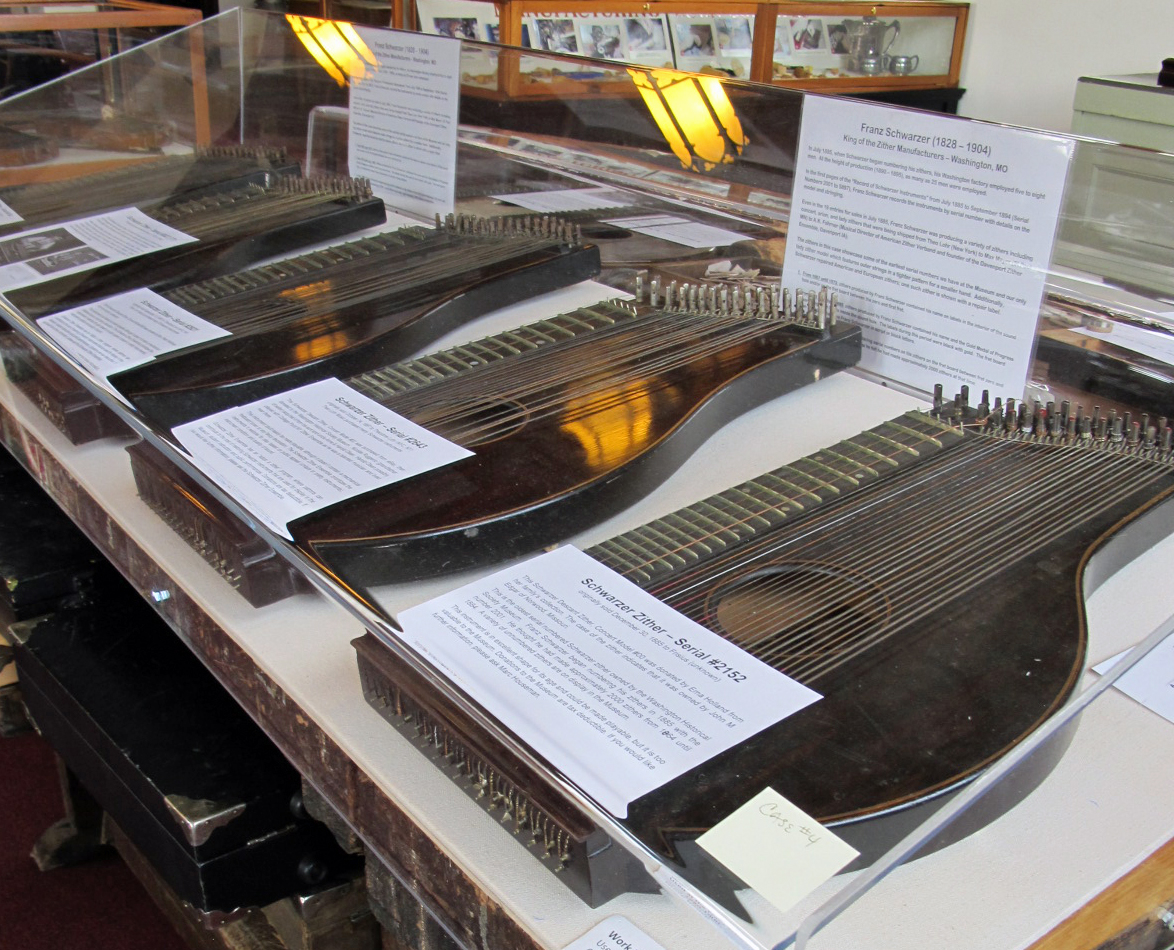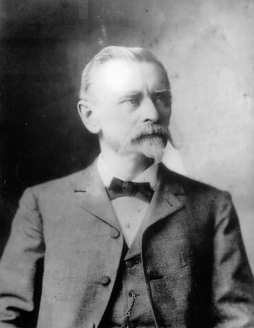
By Suzanne Hill
One can only imagine how thrilled Franz Schwarzer would be if he knew how interest in his zithers has grown in the last few years.
Credit the late Richard Krueger of Pittsfield, Ill., with that renewed interest. A zitherist and the son of German immigrants, he first learned of Franz Krueger’s zither factory in Washington. The shared surname attracted him to Washington. Soon he learned of Schwarzer’s zithers. Schwarzer produced more than 11,000 instruments.
Krueger wanted to make Washington a center of zither music. He started the Schwarzer Zither Ensemble in 2017, supplying instruments and encouragement. Anne Prinz shared his vision of creating a zither center in the United States and agreed to teach. She asked Alice Spencer and Michael Hustedde of the Davenport Zither Ensemble to help. Eventually, Prinz came to live in Washington.
The Schwarzer Zither Ensemble meets every Sunday at the Washington Historical Society from 1:30-3:30 p.m. New members are always welcome. Free lessons and loaner zithers are available.
The ensemble held the North American Zither Gathering in Washington in 2018. In 2022, the International Zither Gathering was held in Washington.
Second Floor Display
The museum’s zither collection, displayed on the second floor, has grown since the ensemble was formed, the late museum director Marc Houseman noted. Twelve zithers are on display with a total of 20 in the collection, including one Krueger zither.
In about 2018, a bowed zither, also known as a violin zither, was donated. While it looks like a violin, the fingering is the same as that used with a zither, but played with a bow. It had an Altemueller label inside, indicating it was purchased at the music and gift shop preceding Altemueller Jewelry.
The museum has three labeled Schwarzer bowed zithers.
Another unique zither came from Kansas City. Schwarzer had made both the zither and the table upon which it rests. A zitherist there played it in Kansas City bars for several years. A woman acquired it and donated it to the museum.
The late Robert L. Miller left a zither workbench to the museum. When the Schwarzer factory closed completely in 1953, his father purchased the workbench at the auction. It is one of four Schwarzer workbenches.
The museum also has glass negatives used in Schwarzer catalogs. Annie Grohe, wife to Herman Grohe, who inherited the factory, handed out artifacts to children at the auction when the company was liquidated. They included Charles Sincox and George Bocklage, at the auction. She asked them to keep the items in Washington. Sincox and Bocklage donated their negatives to the museum.
The Missouri State Museum in the state capitol at Jefferson City has the original ledger with Schwarzer serial numbers and purchasers. The museum has a copy of this for use in determining the year, the model and the original purchaser when someone inquiries about a zither.
Many people have been drawn to the museum because of the revival of the zither in Washington. “What a wonderful thing,” Houseman said. “Life has been brought in here because of the zither.”
The Zither King of Washington

Franz Schwarzer, a woodworker and a zitherist from Austria, came to Washington in 1867 when he started making zithers.
Soon he started incorporating fine artistic elements, such as German silver frets, mother of pearl inlay and ivory, and rare woods to manufacture his zithers. In 1873, he entered three zithers in the Vienna Exposition and received the “Gold Medal of Progress.”
Schwarzer produced over 11,000 instruments and eventually employed 25 workmen. Plain zithers sold for about $19, while larger, more decorated ones could bring $600 to $1,000.
He died in 1904, leaving his widow, Josephine, in charge. She continued for eight years until she died. The Schwarzers’ nephew Herman Grohe carried on until he died in 1924.
Albert Hesse, an employee and one of the last zither players in Washington, continued selling inventory, making repairs and fabricating zither strings. He worked until the 1950s when Mrs. Grohe’s nephew demolished the factory.
Here's another article about Schwarzer, written by the late George Bocklage:
Franz Schwarzer, Missouri's Zither King
The following information has been taken from page 818 of Goodspeed's History of Franklin, Jefferson, Washington, Crawford and Gasconade Counties, published originally in 1888.
Franz Schwarzer, manufacturer of zithers in Washington, Mo., is a native of Olmutz, Austria, born in 1828, and the son of Anton and Marie (Strnad) Schwarzer. The father was a contractor for buildings, and also engaged in the manufacture of furniture.
Franz was sent to the gymnasium at Olmutz, and subsequently spent three years at the Polytechnic Institute at Vienna, where he learned the principles of architecture, wood carving and ornamentation.
Returning from college, he received instruction on the zither from the celebrated composer, Ludwig Ritter Von Ditrich, a member of the Austrian nobility. As soon as Mr. Schwarzer learned to play on the instrument he began to study the principles involved in its construction. Being something of a mechanical genius for one of his age, he went to his father's shop at Olmutz, and there worked incessantly to improve the zither.
His first efforts were so successful that they attracted the attention of the renowned composer, Carl J. F. Umlant, of Vienna, who repeatedly urged the young man to go to Vienna and manufacture the improved instrument and thus win fame and fortune, but our subject had made up his mind to emigrate to America.
Accordingly, in 1864, he sailed to the United States, and settled near Holstein, Warren Co., Mo., and began tilling the soil. At the end of two years he became convinced that farming
was an occupation better suited for some one else than for himself, and in 1866 sold out and came to Washington, where he began earning a living by erecting altars, pulpits and other fancy wood work.
While so engaged he thought of his improvement on the zither of Austria. Inquiry developed the fact that there was no such manufactory in the United States, and that the instrument was almost wholly unknown here. Mr. Schwarzer made no excitement about the matter, but made a zither now and then for a friend, until he opened a shop and began to devote his entire time and attention to the manufacture of the same. His capital was limited, and he was compelled to go slowly.
Gradually his instrument began to be heard of in Europe, and soon he had a foreign demand he was not able to supply. His business has constantly increased until he now employs eleven men, and his instruments have been sold in every State, and are also quite well established in Germany, Austria, France, Spain, England and Mexico.
Prior to 1862 only two kinds of zithers were manufactured in the world, and they in Europe. They were the prime or common style and elege. Mr. Schwarzer's first improvement was called the concert. He has since made the following: Arion harp, harp zither, with forty-three and forty-four strings; harp zither, with thirty-eight strings; Arion, violin and 'cello.
In 1873 he sent three finely-made instruments to Vienna Exposition, and received a massive gold medal as the first prize over about thirty European competitors.
He has made over 3,000 instruments in all, and last July celebrated the twenty-fifth
anniversary of his manufactory. The wood used in its manufacture is of two
kinds—spruce, obtained from Boston, and segoya giganta, of California.
March 1, 1859, Mr. Schwarzer married Miss Josephine Pettera, a native of Brunn,
Moravia, Austria, born in 1836. He has a nephew, Charles Grohe, living with
him, also a niece, Thressa, sister to Charles, and he is a guardian to both. He
is a Republican in politics, and was chief of the fire department in Washington
for several years.
